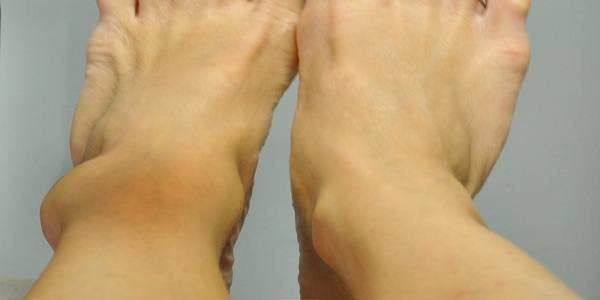Broken ankle

Ankle injuries are among the most common bone and joint injuries. Often, the severity of the pain, the inability to walk normally or step at all on the affected leg, or the concern that the bone may have been broken is what prompts people to seek medicalcare for their ankle injury.
The main problem faced by the affected and the doctors at the first visit of the patient is whether there is a broken bone. It is often difficult to distinguish between fractures /broken bones/ and a sprain or tear or strain of a tendon without taking an X-ray of the ankle.
The ankle joint is composed of the connection of three bones – the tibia, the tibia and the talus, also called the talus.
What are the symptoms?
The signs and symptoms of ankle injuries and fractures in the majority of cases are obvious:
• Pain is the most common complaint. Usually the pain is not localized exactly at the site of the fracture.
• The affected person may initially feel the pain elsewhere, usually around the knee or on the little toes. Only after the pain is localized around the ankle. In such cases, the pain in the ankle stops when the affected person starts walking.
• It often happens that the area around the ankle swells. Swelling suggests soft tissue damage with possible bleeding around the joint or infiltration of fluid into the joint itself, most likely blood.
• The affected person may notice that the area around the joint begins to turn blue, although not immediately. The bruising may extend down the foot or to the toes.
• In more severe fractures, there may be obvious deformities of the bones around the ankle. The skin may be stretched over the broken bone. And the displacement of the broken bone may be visible when looking at the ankle.
• If nerves or blood vessels reaching the foot are injured, the pain may be stronger, the skin may fade, numbness or the affected person cannot move their foot or toes.
What are the causes?
When a person puts too much pressure on the ankle joint, beyond its capacity, it injures itself.
• If only the tendons are affected and are stretched or torn, the injury is a sprained ankle.
• If any of the three bones forming the ankle joint are affected and its integrity compromised, then the injury to the ankle is a fracture.
Fractures can occur when there are several joint connections at the same time. This can happen in several ways:
• “Rolling” of the ankle inward or outward, with the weight of the entire body being borne by the ankle.
• Excessive flexion or extension of the ankle joint.
• Clamping with something heavy on the ankle or jumping from a very great height.
• Turning the ankle to one side;
Ankle fracture treatment
If a person suspects that they may have an ankle fracture, it is recommended that they contact their GP or go to a center for emergency medical attention immediately. But until he gets to a hospital or doctor’s office he can do the following:
• Elevate the ankle which will help reduce swelling and pain.
• Apply cold compresses over the injured area but ice should not be applied directly to the skin. Cold compresses are effective for the first 24 to 48 hours.
• Ibuprofen is ideal for ankle injuries because it works both as a pain reliever and to reduce inflammation.



